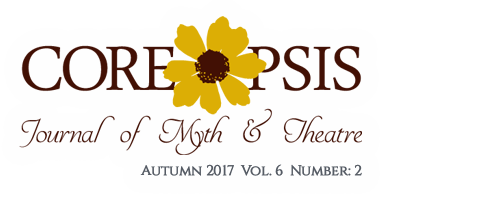“It easily lured me into imagining an ancient time; people gathering and participating.”

Album Review:
Shades of Green
Musician:
Jamie Laval
Released 2003
Recording Label not listed.
jamielaval.com
Review: Jamie Laval, Shades of Green
Reviewers: Roberta Cantow and Rita Naomi Shore
This is a collaborative review by Rita Naomi Shore, a retired New York City English teacher and a lover of Celtic music even though she has absolutely no Celtic blood and Roberta Cantow, a filmmaker whose Bloodtime Moontime Dreamtime Trilogy included music based on Celtic themes.
This is a very specific album for people who want to listen to Celtic music and don’t mind that it goes on a bit. Within that group, Jamie Laval really speaks to the genre. He was classically trained and, by his own admission in a TED X Talk Tryon, (2015) “How a fiddle tune can change the world” (2016), he was seduced by folk music way beyond the time of childhood influences. Now, years later, Jamie Laval has made a name for himself in the Celtic music world as one can see by just a few of the many Youtube examples of his performances. Now is a great time to revisit Laval’s 2003 album, Shades of Green, and hear Laval’s philosophy embedded in the music itself.
Shades of Green evokes the very essence of Celtic music. The much appreciated liner notes evoke Laval’s understanding of the mutability of music: “…traditional music is passed down… becomes imbued with the culture that crafted it.” And most importantly for a musician who was trained in classical music, Laval writes, “Unlike music crafted from the pen of a single composer, traditional music reflects the emotional condition of countless thousands.” Finally, Laval strives to “tap into the collective soul of the [Celtic] people” and reflect “the arduousness of its daily existence” and the “romance too pure for words, passion too deep for tears.” Well, there it is in a nutshell; the best definition of folk music I have ever read.
The question is, does Laval deliver? Yes, he does. Laval’s fiddling is delicate and nuanced. He has the light touch of a classically trained musician. There is no overly enthusiastic sawing of the bow that marks a musician less trained and less thoughtful. The carefully referenced sources of each of the 12 pieces on the album also show that Laval holds himself to the recognition that his is only the latest iteration of a long history of each song.
The first track, “Dance Rustique,” identified as a round, is a driving blend of a few melodies from Brittany worked out like a Bach fugue. Its energy is such that it seems to be announcing an event. I found it haunting and exciting and at the same time, soothing, smooth and energetic. It easily lured me into imagining an ancient time; people gathering and participating. Notes with an energetic touch and notes with a light touch. There were subtle pleasant shifts throughout. I wished to be there with those people, participating and dancing. Listening for the extended length of this piece requires a different kind of sustained attention. The second track, “Basking,” a traditional jig, commends itself for its clean sharp lines, elegant violin and rhythm just right with moments of a controlled and plaintive whine. It had a winsome quality that brought George Winston’s piano pieces to mind in the way that they too seem to reach deep into the soul of a setting. Track three, “Night Ride”, gallops along and I was impressed by Laval’s restraint. It was almost like a memory of something heard before. Whatever the hardships of life might have been, this piece announces that those folks of long ago also had plenty of fun. “Just before Daybreak” was a meditation, apparently written by Laval that would make a lovely film track. It is lilting and emotional, taking us through various octaves, all the while with supreme control and full-bodied expression of the violin. “Fiona’s Waltz” is a loving piece, just what a waltz should be but with an incredible sense of longing. “Vineyard Harvest” was nicely chorded, evoked an autumnal day, but was a little too modern for my taste. The next four tracks felt a little more traditional and made me appreciate how the fiddle can evoke the bag pipe when it chords to effect a drone. “A Long Trip Home” impressed me with its dangerous jazzy slides. “Salutation” surprised me with a trip into an English country dance from 1710. Not sure why it was here except Laval liked it. I found it just a bit odd in an album of Celtic music. In the final track, “The Court Jester,“ Laval wove together several traditional tunes into a lovely evocative finale, a generous sharing of a skilled and mindful Celtic Folk musician.
Overall, the variety of music on the disc is distinctive and varied. Moods shift, at times bouncy and at other times, aching. The sound of the violin is crisp and piercing. The album called forth a sense of weeping and of longing with elements both delicate and strong. So, indeed, Shades of Green is a lovely album. It is available on Itunes and Amazon and is an elegant addition to your listening list.
Listen to Jamie Laval’s Music here: https://www.jamielaval.com/music
References
Shades of Green, Jamie Laval, 2003
TEDxTron, (2015, October), Jamie Laval: How a fiddle tune can change the world.
 Roberta Cantow, a filmmaker whose Bloodtime Moontime Dreamtime Trilogy included music based on Celtic themes.
Roberta Cantow, a filmmaker whose Bloodtime Moontime Dreamtime Trilogy included music based on Celtic themes.
 Rita Naomi Shore, a retired New York City English teacher and a lover of Celtic music even though she has absolutely no Celtic blood.
Rita Naomi Shore, a retired New York City English teacher and a lover of Celtic music even though she has absolutely no Celtic blood.
